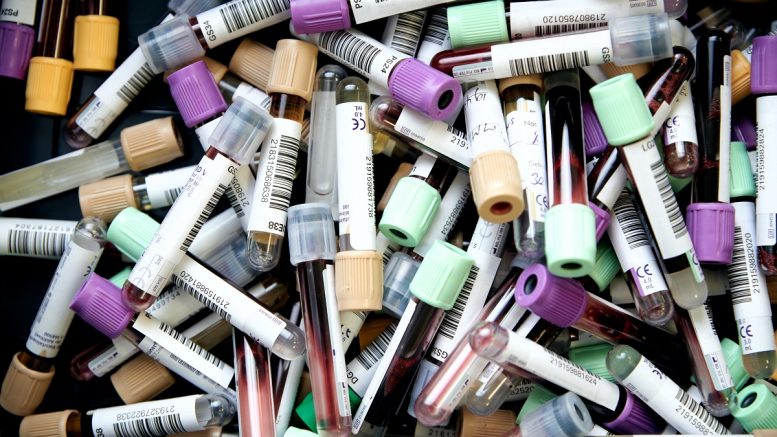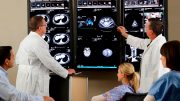The NHS carries out an estimated 1.5 billion diagnostic tests a year with diagnostic activity forming part of over 85% of clinical pathways. Richard Craven, CliniSys UK chief executive, explains how regional diagnostics hubs that give clinicians access to test results of all kinds, no matter where they are carried out, could help the NHS to address some of the big challenges facing it – while improving services for patients.
The NHS is facing a huge challenge. Over the next year, it will need to address an ‘exit wave’ of Covid-19 and a potentially difficult winter that could add to the already high pressure on A&E.
It will also face the challenge of ‘recovering’ elective services while starting on a new round of restructuring and reform. To do all this while addressing its funding and workforce challenges, the NHS will need to run its services as efficiently as possible.
The government white paper, Integration and Innovation, recognises this and sets out proposals to join-up healthcare services such that diagnostic details, investigations, and clinical decisions can be collected, conducted, and made once and then shared across clinical teams.
These plans include the establishment of networks for clinical specialities, imaging and pathology, the creation of integrated care systems, and the parallel development of acute groups and integrated care partnerships.
To keep care as ‘close to home’ as possible, they also include plans for digital patient services. In pathology, these include community diagnostic hubs to provide faster, easier access to routine tests without the need to visit hospital, and an expansion of home-testing within remote monitoring projects.
All these developments will put a premium on organisations being able to share information with each other and, eventually, with patients. Which, in pathology again, means sharing diagnostic test results across modalities.
Developing the concept of a diagnostic hub
CliniSys is responding by developing the concept of a diagnostic hub with several of England’s new regions. The focus is on making more use of established IT systems, while enabling them to share test results of all kinds with each other.
Although the initiative is rooted in pathology, the vision is to include test results of all kinds, including radiology, cardiology and endoscopy, so clinicians have a ‘one stop shop’ for all the investigations carried out for their patient.
Technically, the regional diagnostic hub would make use of the CliniSys Integrated Clinical Environment, or ICE, which is in widespread use by hospital departments and GPs to order both blood and imaging tests and to receive the results.
ICE has a feature called ICE OpenNet that enables one instance of ICE to share results with another. This is already used by some large acute trusts to enable clinicians working on one hospital site to see results from tests conducted on a different site.
However, it wouldn’t be possible to link-up a whole region this way: so our proposal is to create a hub instance of ICE that all the other ICE systems can talk to. This would be hosted in the cloud and handle all the required security and data processing.
Benefits: from fewer repeat tests to support for integration
One of the major benefits of a diagnostic hub would be to save money on unnecessary repeat testing. For example, if a patient was taken to A&E, a clinician would be able to see if they had already undergone a test that they would otherwise order.
Or, if the clinician still wanted to order the test, they would be able to use the earlier result as a baseline to help them to interpret it. A diagnostic hub would also improve the patient experience, by reducing the number of potentially stressful and invasive tests that they need to undergo and indeed the number of visits to healthcare facilities to complete the diagnostic process.
In the longer-term, a diagnostic hub would support the drive for integrated care, by making results available to health and care professionals working in different services – as long as they had appropriate access and patient consent.
And it would enable the creation of new patient pathways, including services that make creative use of those new community diagnostic hubs and home-testing. Finally, the concept of a diagnostic hub would support exciting developments such as digital pathology and genomics.
In digital pathology, the traditional slide becomes a digital image that can be examined and reported from many more settings, with the support of new machine learning and AI technologies, while genomics holds out the promise that treatments can be tailored to an individual’s genetic make-up.
CliniSys has recently launched a laboratory information system for genomics that has been developed and successfully deployed in Europe; however, the potential of these technologies will not be achieved unless the results of genetic testing can be integrated into the healthcare record and viewed alongside other results.
Putting pathology at the centre of the patient pathway
With the demand for efficiency and the arrival of increasingly networked and integrated health and care systems, pathology is emerging from the laboratory to play a key role in the patient pathway. This is stimulating new thinking about how to get the right results to the right clinician at the right time and about how to prepare for the coming world of precision medicine, of which genomics is an important part.
The work that we are doing on the regional diagnostic hub has the potential to play a role in helping NHS organisations across the country to address the huge agenda they are facing and to prepare positively for the exciting future that should lie on the other side of it.





